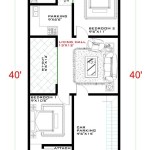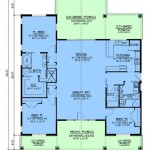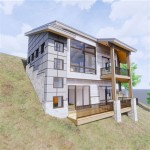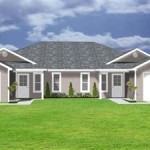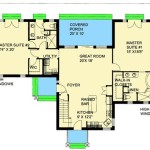Tiny Home Open Floor Plan: Maximizing Space and Functionality
The tiny home movement has gained significant traction in recent years, driven by a desire for simpler living, affordability, and environmental consciousness. At the heart of this trend lies the concept of maximizing space within a limited footprint. Open floor plans are often a cornerstone of tiny home design, offering a sense of openness and fluidity that enhances both the aesthetics and functionality of these compact living spaces. This article delves into the nuances of open floor plans in tiny homes, exploring the advantages, challenges, and key considerations for successful implementation.
Advantages of Open Floor Plans in Tiny Homes
Open floor plans offer numerous benefits in the context of tiny home living:
1. Enhanced Sense of Space: By eliminating traditional walls and partitions, open floor plans create a sense of spaciousness that belies the home's actual size. This visual expanse can make a small home feel more welcoming and inviting, fostering a connection to the surrounding environment.
2. Flexibility and Multifunctionality: Open floor plans lend themselves well to multifunctionality, allowing for adaptable spaces that serve multiple purposes. A single area can seamlessly transition from a dining space to a work area to a social gathering spot depending on the needs of the moment.
3. Natural Light and Ventilation: Removing walls enhances natural light penetration, flooding the interior with sunlight and creating a brighter, more cheerful atmosphere. This improved lighting can also contribute to a sense of spaciousness and visual clarity.
4. Improved Flow and Connectivity: Open floor plans foster a sense of flow and connectivity throughout the home. This interconnectedness can enhance social interaction and streamline daily activities, making movement within the space more efficient and enjoyable.
Challenges of Open Floor Plans in Tiny Homes
While open floor plans offer significant advantages, they also present certain challenges that warrant careful consideration:
1. Privacy Considerations: The lack of visual barriers in an open floor plan can sometimes compromise privacy. This can be particularly relevant for individuals seeking quiet time or solitude. Creative design solutions, such as strategically placed furniture or screens, can help address this concern.
2. Sound Amplification: Without the sound-dampening effect of walls, noise can travel more readily through an open floor plan. This can be a challenge in a home where multiple occupants or activities generate different sound levels. Strategically placed rugs, curtains, and other acoustic treatments can assist in mitigating noise reverberation.
3. Organization and Decluttering: Keeping an open floor plan tidy and organized can be a constant challenge, as clutter can quickly make the space feel cramped. Careful attention to storage solutions and a commitment to minimalism are essential for maintaining a sense of spaciousness and flow.
Key Considerations for Open Floor Plan Design
To maximize the benefits of an open floor plan in a tiny home, careful consideration should be given to the following factors:
1. Defining Zones Without Walls: While avoiding traditional walls, it is crucial to establish distinct functional zones within the open space. This can be achieved through strategic placement of furniture, lighting, and flooring materials.
2. Incorporating Multifunctional Furniture: Utilizing furniture that serves multiple purposes is essential for maximizing space efficiency. Convertible sofas, storage beds, and wall-mounted tables are examples of items that can provide flexibility and functionality in a limited space.
3. Prioritizing Storage Solutions: Ample storage is critical for maintaining a sense of order and minimizing clutter. Incorporating vertical storage, built-in shelves, and hidden cabinets can all contribute to maximizing storage capacity without sacrificing valuable floor area.
4. Effective Use of Lighting: Lighting plays a crucial role in enhancing the ambiance and functionality of an open floor plan. Combining natural light with strategically placed artificial lighting can create a sense of depth and delineate distinct zones within the space.
5. Choosing Materials and Finishes: The choice of materials and finishes can significantly impact the overall feel of an open floor plan. Light colors and reflective surfaces can enhance the sense of spaciousness, while textured materials and natural elements can add warmth and character.
:max_bytes(150000):strip_icc()/wanderinstarfarms_103561926_275439266841919_804825427512003420_n-f6f92ef6e3e642acb214c24736ceb114.jpg?strip=all)
11 Beautifully Designed Tiny Homes

10 Small House Plans With Open Floor Blog Homeplans Com

7 Tiny House Floor Plans With No Stairs Small Cottage

Open Concept Rustic Modern Tiny House Plans Sources Ana White

Open Concept Tiny House Designs Ideas On Dornob

Open Concept Rustic Modern Tiny House Plans Sources Ana White

10 Extreme Tiny Homes

27 Adorable Free Tiny House Floor Plans Craft Mart

38 Tiny House Has Main Floor Bedroom Two Lofts Kitchen Living Plans

12 X 24 Tiny Home Designs Floorplans Costs And More The Life



